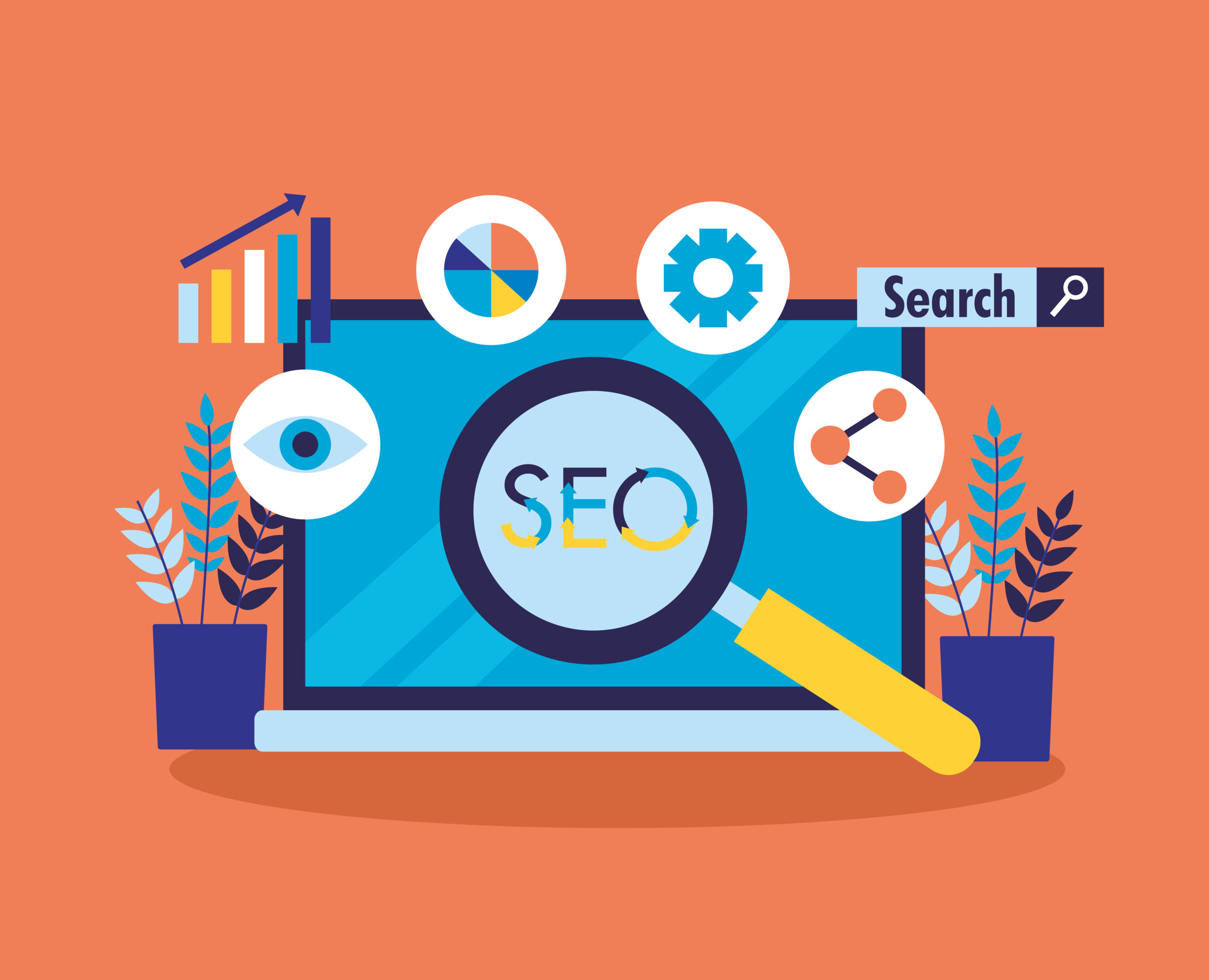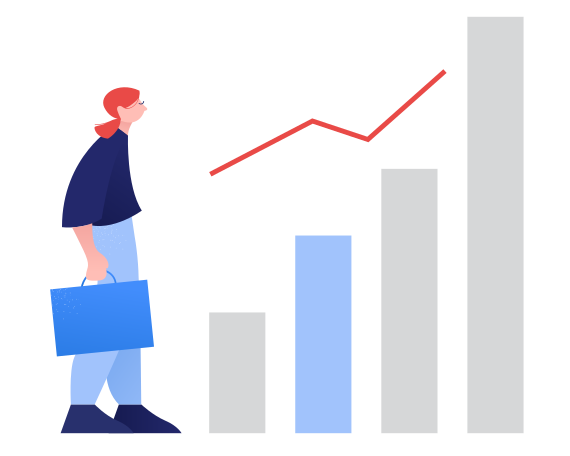Advanced Search Engine Optimization Strategies, Systems & Scale

If your SEO strategy still leans on keyword density, backlink swaps, or hoping a blog post magically ranks overnight you’re playing yesterday’s game.
Google’s algorithm has matured. Today, success depends on systems, not stunts. Technical precision, real user signals, and trustworthy content now outweigh shortcuts. You’re not just optimizing for bots anymore; you’re building experiences that search engines trust because users trust them first.
AI is rewriting how content is interpreted. EEAT is no longer a guideline it’s a filter and updates like Search Generative Experience (SGE) are quietly reshaping how visibility works altogether.
This isn’t about stacking hacks. It’s about understanding how SEO has evolved into a layered discipline one that combines structure, signals, and strategy into a cohesive system.
We’re about to walk through that system. Not the surface-level tactics, but what actually drives visibility in 2025 and why the best-performing sites are problem solvers, not keyword matchers.
You’re Not Stuck You’re Scaling the Wrong Way
Many brands approach SEO like a checklist. They update a few title tags, publish a handful of blog posts, maybe even hire a freelancer to tweak metadata and call it done.
Then the confusion starts. Traffic hits a ceiling. Rankings jump one week, then dip the next. Leads trickle in but rarely convert. It feels like something’s missing, but no one can pinpoint what.
Here’s the uncomfortable truth: SEO in 2025 isn’t about checking boxes. It’s about building a system. One that connects your strategy with your structure, your content with search intent, and your technical foundation with real conversion pathways. It’s not just about visibility it’s about velocity and cohesion.You don’t need more hacks. You need a scalable framework that adapts as algorithms shift and user expectations evolve.
Because Google no longer ranks content in isolation. It evaluates the entire ecosystem. And if your ecosystem isn’t designed to grow in sync, it won’t grow at all.
SEO hasn’t failed you. The system you’re building just isn’t built for this era.
SEO Without Strategy Is Just Noise
If your SEO efforts aren’t mapped to actual business goals awareness, leads, conversions, and customer retention you’re not optimizing, you’re just publishing.
Too often, teams fixate on tools, chasing dashboards and keyword scores without stepping back to ask:
Why are we creating this?
Who is it for?
Where does it lead them next?
Modern SEO doesn’t start with keywords. It starts with context. That means building semantic content clusters that guide discovery, organizing pages around intent not just volume and aligning everything with first-party data to reflect real user behavior. Layer that with UX built for experience, and you start to see momentum.
On the other hand, cling to old habits like stuffing similar keywords into siloed blogs or duplicating themes across pages and you risk more than stagnation. You confuse search engines. You lose users.
The difference between mediocre rankings and scalable growth isn’t more content—it’s smarter architecture. You don’t need to say more. You need to say what matters, in the structure that gets found, trusted, and acted on.
Because SEO in 2025 isn’t about loudness. It’s about clarity.
From Keywords to Context Google’s AI Sees Through It All
Gone are the days when rankings hinged on keyword density or clever phrasing. Google’s AI doesn’t just match terms it interprets meaning. It reads between the lines, connecting entities, intent, and relationships to understand what your content actually offers.
In 2025, surface-level SEO is a losing game. The brands that thrive? They build around topics, not terms. That means constructing a well-connected topic map, not a fragmented list of keywords. It means ensuring your pages talk to each other and cover depth across user journeys not just surface-level variations.
Tools like InLinks, NeuronWriter, or Surfer’s semantic suggestions are no longer optional they’re the baseline. But true edge comes from understanding how these tools structure relationships and why Google favors certain formats in the Knowledge Graph.
Here’s a quick tip: Run your top content through Google’s Natural Language API or a ChatGPT-based semantic parser. You’ll spot gaps in context, tone, or entity linking you never noticed and that’s where your competitive edge lives.
Because ranking today isn’t just about presence it’s about precision. And context is the currency that fuels it.
The Real Ranking Barrier : A Broken Technical Spine
You can craft the best content on the internet, but if your site’s technical foundation is weak, you’re just whispering into the void. Let’s call it what it is: a broken technical spine.
What stalls real SEO growth isn’t always bad strategy, it’s stuff like bloated crawl paths, sluggish Core Web Vitals, tangled internal links, and missing structured data. These aren’t just “nice to fix someday” issues. They’re invisible blockers throttling your discoverability at the algorithmic level.
In 2025, Google isn’t just judging your words it’s scoring your infrastructure. Page experience, schema coverage, mobile responsiveness, and crawl efficiency aren’t behind-the-scenes metrics anymore. They’re ranking signals baked right into the system.
And if your site loads slowly or lacks structured data? Google doesn’t wait around. It skips you.
Think of schema as your site’s formal handshake with search engines. Without it, you’re just another blurred face in the crowd. No matter how polished your blog looks, if Google can’t parse it, it won’t promote it.
So before obsessing over your next keyword cluster, ask yourself: can your site handle the traffic you’re asking for?
Systems that Scale SOPs, Templates & Automation
Let’s be honest SEO that depends on handcrafted workflows doesn’t age well. What works at 10 pages breaks at 100. And when traffic spikes? Manual becomes mayhem.
Modern SEO needs to be systemized, not just optimized.
Think SOPs for content briefs powered by entity extraction tools like Jasper or Claude can churn out structured outlines that stay aligned with both user intent and topical authority. Build link hubs that centralize internal linking logic, instead of winging it post-publish. Run Screaming Frog health checks on a schedule. Plug SurferSEO into your Google Search Console data for smarter, data-fed optimizations.
Even your republishing process can be automated. Use Zapier to push updates, recycle evergreen posts, and stay visible without burning out your team.
Here’s the hard truth: If your SEO system can’t scale with your traffic, it’s not advanced—it’s a bottleneck in disguise.
Great SEO in 2025 isn’t about working harder. It’s about building smarter workflows that grow without grinding everything to a halt.
Move from Rankings to Conversions with Full-Funnel SEO
Ranking on page one feels great until you realize it’s not moving the needle. Clicks don’t pay the bills. Conversions do. That’s where full-funnel SEO enters. It’s not just about getting found. It’s about guiding users from curiosity to conversion.
At the top of the funnel (TOFU), focus on topic clusters, helpful how-to content, and shareable assets that build awareness. Middle-of-funnel (MOFU)? Think case studies, gated downloads, and internal CTAs that nudge users forward. Bottom-of-funnel (BOFU) is where it gets critical comparison pages, reviews, and local SEO can be deal closers.
Don’t just track rankings. Track revenue per keyword, customer lifetime value per landing page, and bounce-to-action ratios. That’s how you’ll spot what’s working and what’s just window dressing.
Google’s Helpful Content System wasn’t built to reward fluff. If your content doesn’t serve the user’s journey at every stage, expect diminishing returns.
Rankings are vanity. Revenue is sanity. And the brands that treat SEO like a revenue engine not a visibility stunt are the ones that scale, survive, and thrive.
Build Your Advanced SEO Blueprint in 5 Simple Steps
You don’t need a total SEO overhaul to win. But you do need a system a repeatable, adaptable framework that grows with your business.
Let’s break it down:
Step 1: Audit What’s Already Live
Before anything new, fix what’s broken. Identify technical snags, outdated content, and missed keyword opportunities that could be quietly draining performance.
Step 2: Cluster by Intent, Not Just Topic
Skip the siloed blog posts. Group content into interconnected clusters based on real search intent. Then connect them with strategic hub pages that guide both users and crawlers seamlessly.
Step 3: Systemize Your Workflow
Create clear SOPs: structured content briefs, linking templates, and editorial calendars. Automate repetitive steps where possible but never hand over creative decisions to software.
Step 4: Monitor Behavior, Not Just Rankings
Rankings don’t tell the whole story. Track user behavior with tools like GA4 or Looker Studio. Are they engaging? Dropping off? Converting? Follow the signals, not assumptions.
Step 5: Iterate with Purpose
Make optimization a habit, not a reaction. Refresh outdated content. Tighten your internal links. Expand answers where users are clearly asking more. Monthly tweaks compound fast.
Advanced SEO isn’t chaotic hustle, it’s disciplined and structured momentum. Once your system’s in motion, it doesn’t just scale it self-improves.
Case Study: Turning Static Traffic into Scalable Growth for a B2B SaaS Platform
A mid-sized SaaS enterprise came to us with a common pain point: strong product, decent content volume, but flat organic performance. Despite having invested in content marketing, their visibility plateaued. Our audit, powered by Screaming Frog and Google Search Console, surfaced the real culprits.
The site had no clear topical organization content was scattered, internally unlinked, and suffering from cannibalization. Crawl budget was being wasted on orphan pages. Load speeds were lagging. Most critically, less than 40% of their blog content had even been indexed. A product this good deserved a strategy that matched its ambition.
We approached the challenge with a three-tiered plan. First, we restructured the content architecture, clustering blogs and feature pages into clear thematic groups aligned to mid-funnel, high-intent queries. Pillar pages replaced scattered efforts, creating semantic depth and reducing keyword overlap.
Next, we tackled the tech stack. Custom Python scripts helped detect crawl traps, eliminate duplicates, and enforce schema markup. Core Web Vitals were optimized for speed and interactivity across devices.
Finally, we overhauled their internal linking using a semi-automated structure that funneled link equity toward conversion-centric product pages. Alongside, we ran a backlink acquisition sprint targeting trusted SaaS directories and relevant guest posting platforms.
Six months in, the results were unambiguous. Organic traffic rose by 148%. Page-one keyword rankings jumped 93%. Conversions from organic grew 62%. Indexation improved by 71%, and bounce rates saw a notable 28% drop.
This wasn’t a story of viral growth hacks it was about building a system that scales. One rooted in clean architecture, repeatable processes, and a strategy built for long-term search equity.
Expert FAQs on Advanced SEO
Q1. Do I really need topical clusters, or can I just focus on publishing good content?
Topical clusters aren’t just a trendy framework, they’re how search engines understand context. Publishing good content without structure is like writing chapters of a book in random order. Clusters give your content a map. They guide both users and crawlers toward deeper engagement and better rankings.
Q2. How often should I update existing content?
There’s no fixed rule, but monthly check-ins on high-traffic or conversion-critical pages are a good start. Use GA4 or Looker Studio to track dips in engagement, CTR, or ranking shifts. Update when the data tells you not when your calendar reminds you.
Q3. Is internal linking still that important in 2025?
Yes and probably even more so. Google’s crawl efficiency still depends heavily on internal pathways. A solid linking structure isn’t just about equity flow it improves UX, boosts engagement time, and helps avoid content isolation. The more strategic your linking, the stronger your SEO compound effect.
Q4. What’s the difference between keyword cannibalization and content overlap?
Cannibalization means multiple pages are competing for the same intent and hurting each other’s chances of ranking. Overlap, on the other hand, just means topics are related. Not all overlap is bad, sometimes it’s needed to serve different stages of the funnel. The key is intent clarity and consolidation when confusion creeps in.
Q5. Do SOPs really matter for SEO scaling?
If you’re aiming for growth beyond a 10-page blog, absolutely. SOPs (Standard Operating Procedures) ensure consistency, especially when you have multiple writers, SEOs, or content managers. They help your team speak the same language, use the same structures, and build toward the same outcomes even if you’re in five time zones.
Q6. Can automation tools replace manual SEO work?
They can reduce grunt work, not replace strategy. Think of automation as your assistant not your strategist. Python scripts, Screaming Frog, and internal linking tools can save hours. But choosing what to automate (and when to override) still requires human judgment. That’s the part AI hasn’t cracked.
Q7. How do I know if my SEO blueprint is “working”?
Look beyond traffic. Are your targeted keywords climbing steadily? Are conversions from organic growing? Is your crawl budget being spent on the right pages? SEO success isn’t just movement, it’s movement in the right direction. If the system you built runs smoothly and scales results, you’re on track.
Q8. What’s one overlooked factor in advanced SEO?
Content design. Not just how things look but how users interact with your layout, headings, CTAs, and on-page navigation. A beautifully optimized article that’s hard to skim will still fail. SEO doesn’t end at ranking, it ends at retention.
Final Words: Your SEO Journey From Patchwork to Powerhouse
Advanced SEO isn’t about jumping on the next algorithm update, it’s about engineering a system that compounds value over time. What once felt like a patchwork of keywords, hacks, and hopeful rankings must now evolve into a structured, scalable approach.
SEO today is less about traffic and more about transformation turning every search into an opportunity, every page into a touchpoint, and every insight into revenue.
Whether you’re scaling a service or a SaaS don’t settle for visibility. Engineer discoverability, credibility, and revenue at scale. The future of SEO rewards those who think in systems, not shortcuts.






